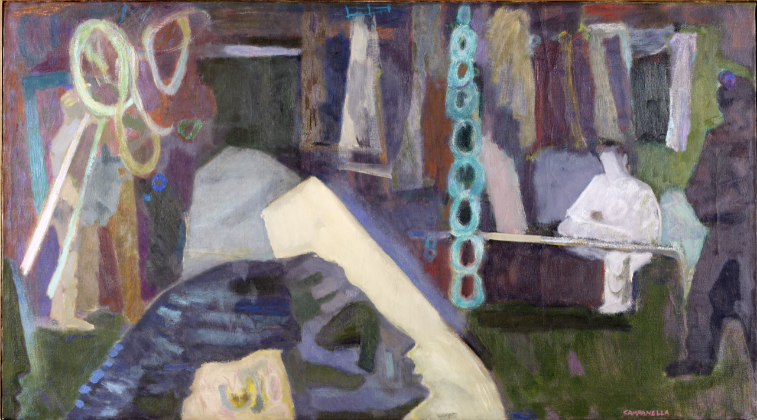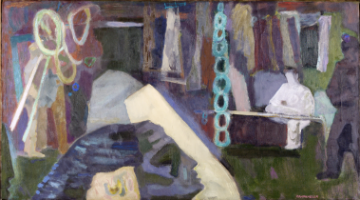
NEW YORK – WPA modernist Vincent Campanella is the subject of Helicline Fine Art’s current exhibition, which is composed of a group of about 20 mid-century oils and drawings. The works can be viewed online at HeliclineFineArt.com now through Sept. 16 and by appointment.
Campanella painted primarily New York, Wyoming and Maine landscapes from the 1920s to the 1990s. He was employed by the Works Progress Administration and began painting in a social realism style that morphed into abstraction.
Many of the works in this exhibition come from the artist’s family and were exhibited at the Albrecht Kemper Museum of Art in 2007. Bathhouse Mine #4 was the cover of the catalog. Campanella received enthusiastic responses from art critics of his time, but as the decades turned his work was lost to time. Today, the paintings and drawings remain visually striking, impactful and speak to today’s collectors. Available works are from the 1930s, ’40s and ’50s.
Helicline specializes in modernism, American scene, social realism, mural studies, industrial landscapes, regionalism, abstraction and more. Located in a private space in midtown Manhattan, Helicline is open by appointment. The paintings, drawings and sculptures on the site represent a sampling of available works.
In addition to HeliclineFineArt.com, available works can also be seen on artnet:http://www.artnet.com/galleries/helicline-fine-art/artworks/.
Vincent Campanella (1915-2001) studied at the Leonardo Da Vinci Art School where the curriculum was based on the Naples Academy founded in the 1440s. He took this classical Renaissance training to the streets of New York, then-rural Astoria, Monhegan Island and Wyoming.
As an easel artist for the WPA in the 1930s, he painted and taught in Rock Springs, Wyoming. His pre-Wyoming style was social realism. Influenced by the open space and geography of Wyoming, his style became abstract.
His work has been shown at the Art Institute of Chicago, Carnegie Institute, Brooklyn Museum, Corcoran Art Gallery, Denver Museum, Metropolitan Museum of Art, Pennsylvania Academy of Fine Arts, San Diego Museum, San Francisco Museum, Seattle Museum, Toledo Museum, Whitney Museum of American Art, and the Universities of Nebraska, Tennessee and Wyoming. He was represented by the renowned Rehn Gallery in New York until the gallery closed in 1956. Rehn also represented Charles Burchfield, Edward Hopper, and Reginald Marsh, among others.
He was a Fellow at the MacDowell Colony in 1968. Retrospective shows of his work have been held at Hunter College (1995) and the Albrecht-Kemper Museum of Art (2007).
Campanella taught at the University of Wyoming (1940), Columbia University (1946-49), the Kansas City Art Institute (1949-52) and Park College (1952-80). Notable students include Robert Morris, Wilbur Niewald and Dik Browne.
He began his life as an artistic prodigy, and through the 1950s was a rising star on the American art scene. But taste shifted away from naturalistic painting, and he became disenchanted with the Abstract Expressionism of the time.
One of Campanella’s closest friends was Thomas Hart Benton, his neighbor in Kansas City. In 1973 Benton asked Campanella to paint his portrait. The painting now hangs in the president’s office at Park University.


